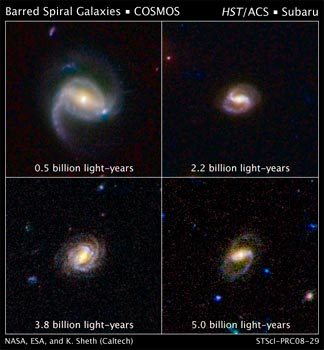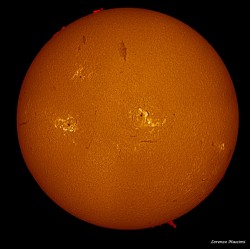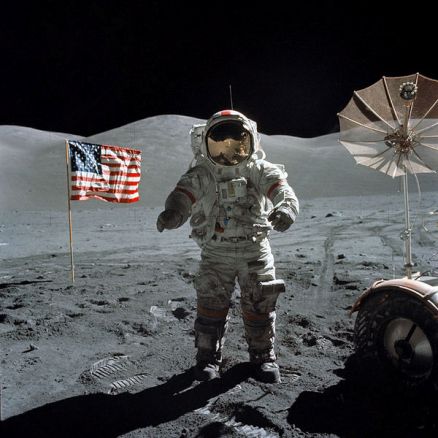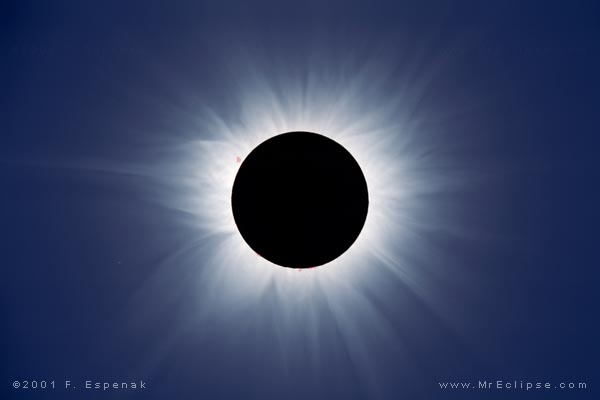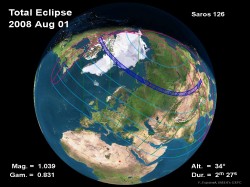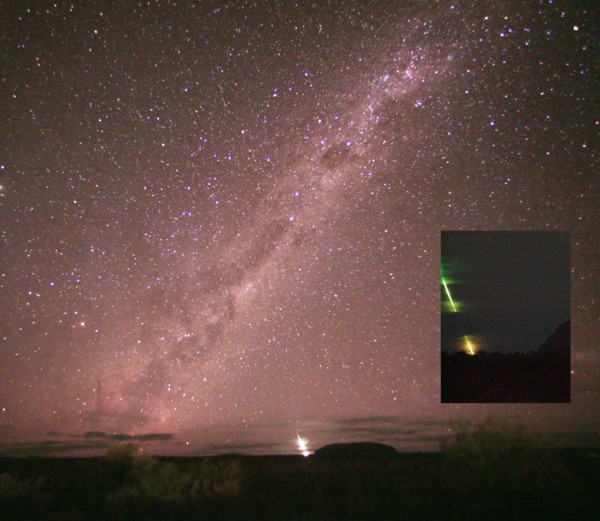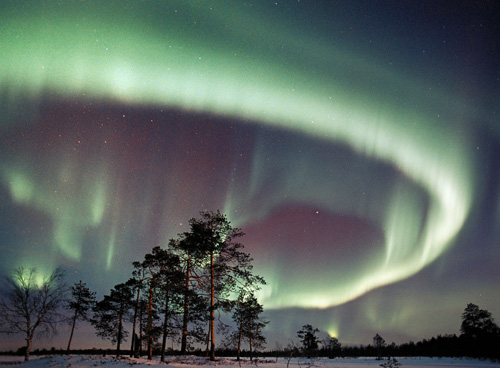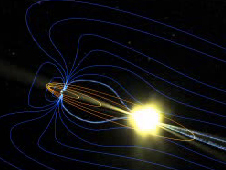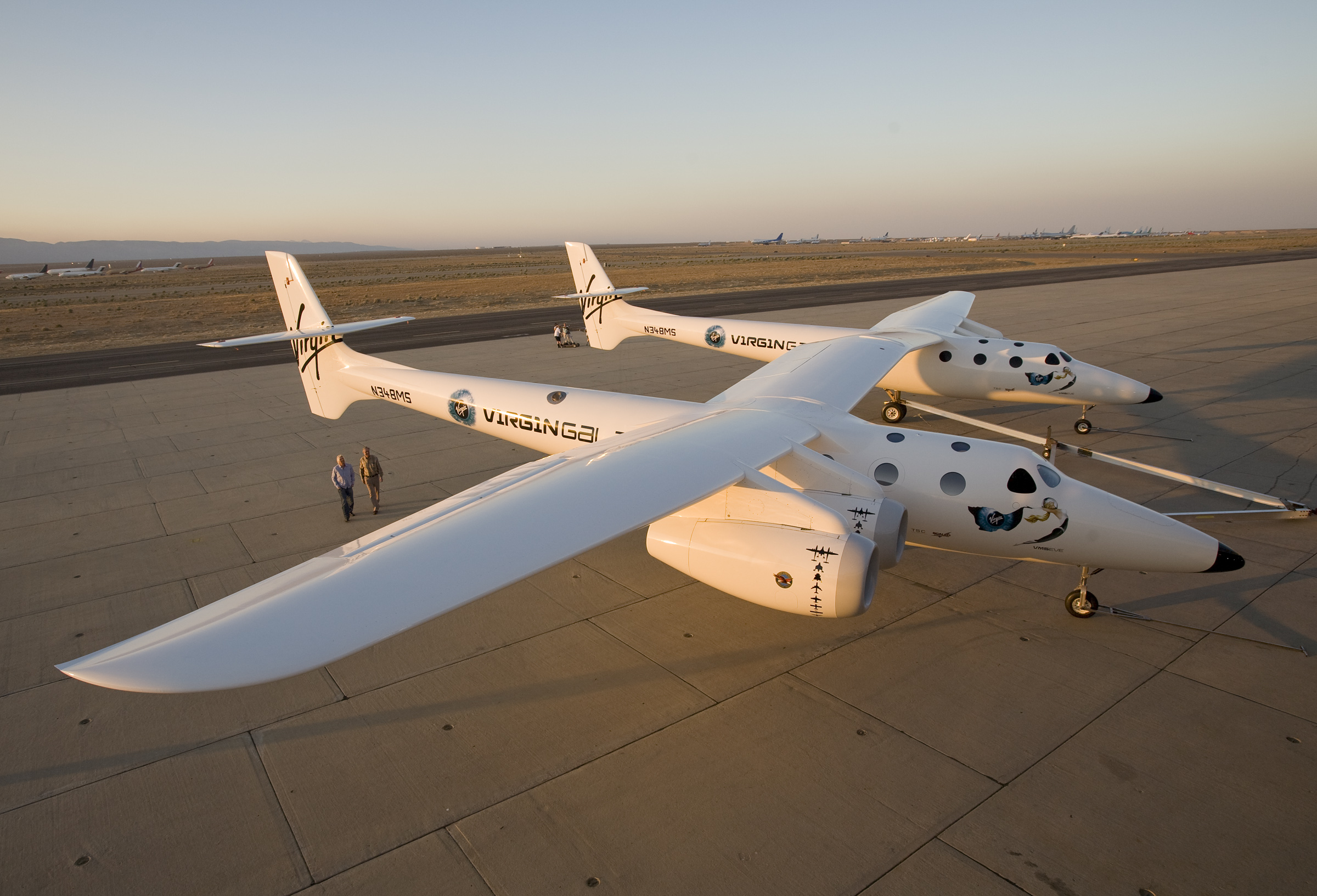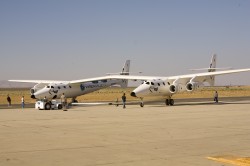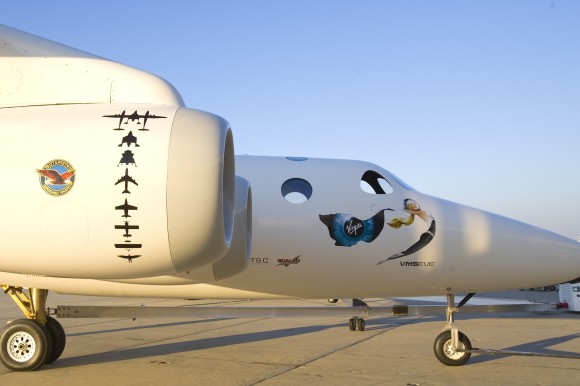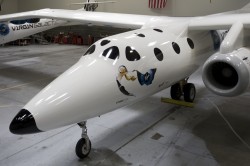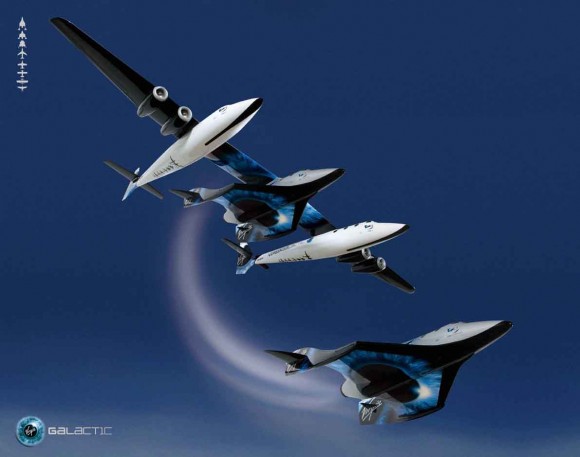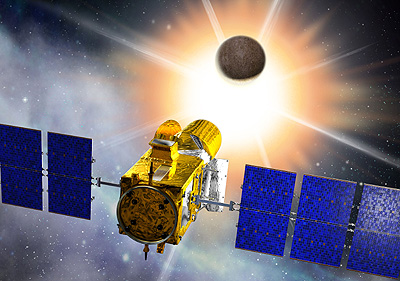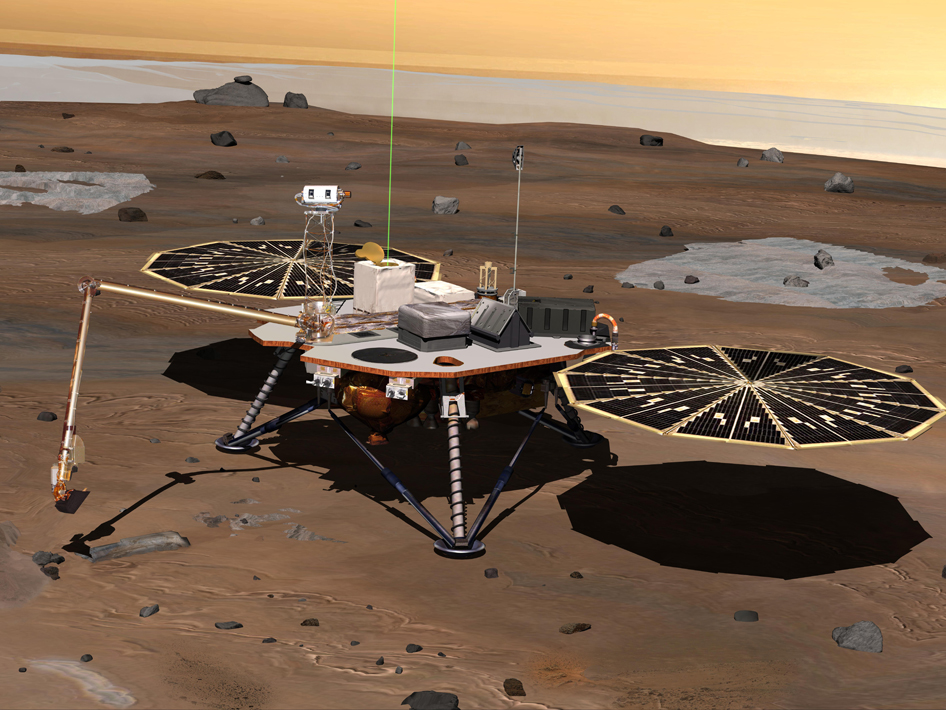[/caption]
Two galaxies walk into a bar. The young, regular spiral galaxy and the mature, barred spiral both order a drink. But the bartender only gives a drink to the barred spiral galaxy. The regular spiral galaxy says, “Hey, why didn’t I get my drink?” The bartender replies, “You’re too young, plus we don’t serve your type.”
Extremely lame joke, I know. But now that I have your attention, one of the latest studies conducted by the Hubble Space Telescope show that barred spiral galaxies were less plentiful 7 billion years ago than they are today. This confirms the idea that bars are a sign of galaxies getting older and reaching full maturity; they are no longer in their “formative years.” Using Hubble’s Advanced Camera for Surveys, astronomers say this study of the history of bar formation provides clues to understanding when and how spiral galaxies form and evolve over time.
And if anyone can come up with a better “two galaxies walk into a bar” joke, post it in the comments below. The winner gets a free subscription to Universe Today.
Hubble looked at more than 2,000 spiral galaxies in the Cosmic Evolution Survey (COSMOS). A team led by Kartik Sheth of the Spitzer Science Center at the California Institute of Technology discovered that only 20 percent of the spiral galaxies in the distant past possessed bars, compared with nearly 70 percent of their modern counterparts.
Bars have been forming steadily over the last 7 billion years, more than tripling in number. “The recently forming bars are not uniformly distributed across galaxy masses, however, and this is a key finding from our investigation,” said Sheth. “They are forming mostly in the small, low-mass galaxies, whereas among the most massive galaxies, the fraction of bars was the same in the past as it is today.”
The findings have important implications for galaxy evolution. “We know that evolution is generally faster for more massive galaxies: They form their stars early and fast and then fade into red disks. Low-mass galaxies are known to form stars at a slower pace, but now we see that they also made their bars slowly over time,” he said.
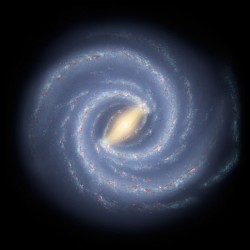
Our own Milky Way Galaxy was recently determined to have a central bar. Our galaxy is another massive barred spiral, and its central bar probably formed somewhat early, like the bars in other large galaxies in the Hubble survey. “Understanding how bars formed in the most distant galaxies will eventually shed light on how it occurred here, in our own backyard,” Sheth said.
COSMOS covers an area of sky nine times larger than the full Moon, surveying 10 times more spiral galaxies than previous observations. In support of the Hubble galaxy images, the team derived distances to the galaxies in the COSMOS field using data from Hubble and an assortment of ground-based telescopes.
Astronomers believe bars form when stellar orbits in a spiral galaxy become unstable and deviate from a circular path. “The tiny elongations in the stars’ orbits grow and they get locked into place, making a bar,” explained team member Bruce Elmegreen of IBM’s research Division in Yorktown Heights, N.Y. “The bar becomes even stronger as it locks more and more of these elongated orbits into place. Eventually a high fraction of the stars in the galaxy’s inner region join the bar.”
Bars are perhaps one of the most important catalysts for changing a galaxy. They force a large amount of gas towards the galactic center, fueling new star formation, building central bulges of stars, and feeding massive black holes.
“The formation of a bar may be the final important act in the evolution of a spiral galaxy,” Sheth said. “Galaxies are thought to build themselves up through mergers with other galaxies. After settling down, the only other dramatic way for galaxies to evolve is through the action of bars.”
Yes, there’s always lots of action in bars. Especially when two galaxies walk in.
Original News Source: HubbleSite

